

|
Local Clubs Albany Corvallis Dallas McMinnville Salem Springfield News & Information Meeting Times & Locations Special Events Club Newsletters Articles Home Home |
Carlos y Juana - The (almost) first type of Americasby Greg Franck-Weiby
Carlos y Juana type silver 4 reales, Mexico City Mint, 1542-55 The first European settlement in what is now the United States was St. Augustine, Florida, founded by the Spanish as a fort of palm logs (which the local Indians soon burned down and the Spanish rebuilt). This coin type would certainly have circulated there, but this coin was at least ten years old when St. Augustine was founded in 1565. The design on one side is the Pillars of Hercules, and on the other side, the "arms" or heraldic device of the Kingdom of Greater Castille. The inscription across the Pillars is "PLUS ULTR(A)" with the numeral 4 for the denomination (the 'V's on the coin are the original Latin form of 'U'). The outer inscription is mostly off the flan because the planchette was smaller than the dies (it was less work to make a thicker blank of the right weight when hammering the silver into sheet). The inscription begins on the shield side, reading 'CAROLUS ET JOHANA REGES', and continues on the pillars side 'HISPANIARUM ET INDIARUM', meaning 'Charles and Johanna, Rulers of Spain and of the Indies'. This design was used on coins of 1, 2, 3, and 4 reales (or 'royals'). There were also silver half and quarter real coins, but they only had crowned initials instead of the pillar design. The eight real denomination ('piece of eight' or 'Spanish dollar') wasn't struck until later in the reign of King Philip II, by which time a different design had been adopted. Consequently, the four reales is the largest denomination of this type. ANA has recently announced the aquisition of a Mexico City 8 reales piece of this type. The only known specimen, its authenticity has been questioned, but it could perhaps be described as what we would now call a 'pattern'. None of the coins of this type had year dates on them. However, they bore the initial of the Mint's Assayer; in some cases the period of service of the Assayer is known, making it possible to attribute a coin to a period of a few years. The first issue of the pillar type, struck 1536 - 1542, didn't have the waves between the pillars. The Mexico City mint continued to produce this typein the name of Carlos y Juana until 1572, despite the fact that Juana died in 1555, and Carlos abdicated in favor of his son Philip II in 1556. The two dots between the pillars indicate the denomination.
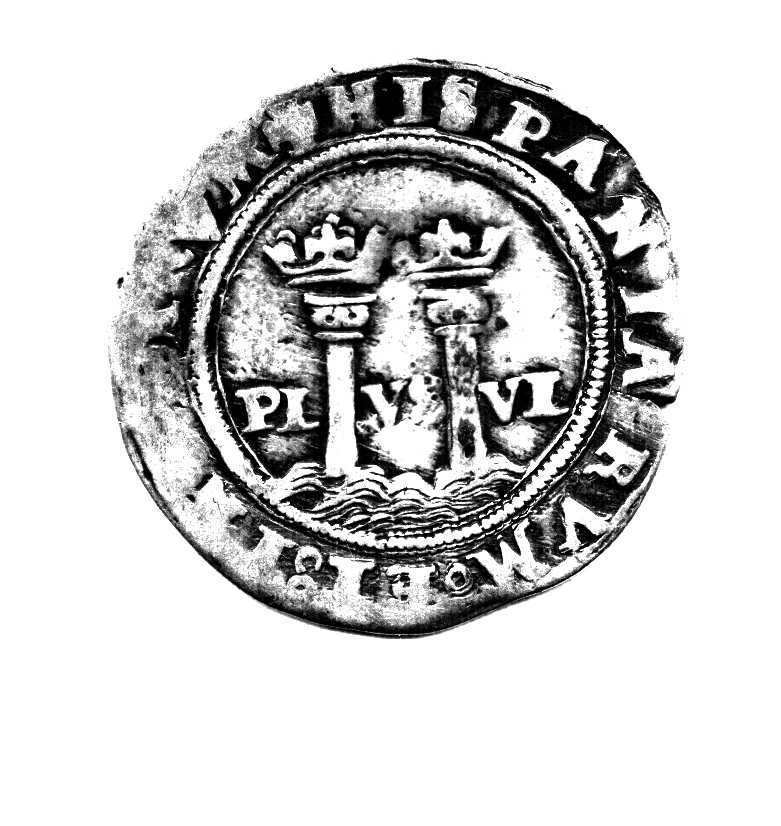 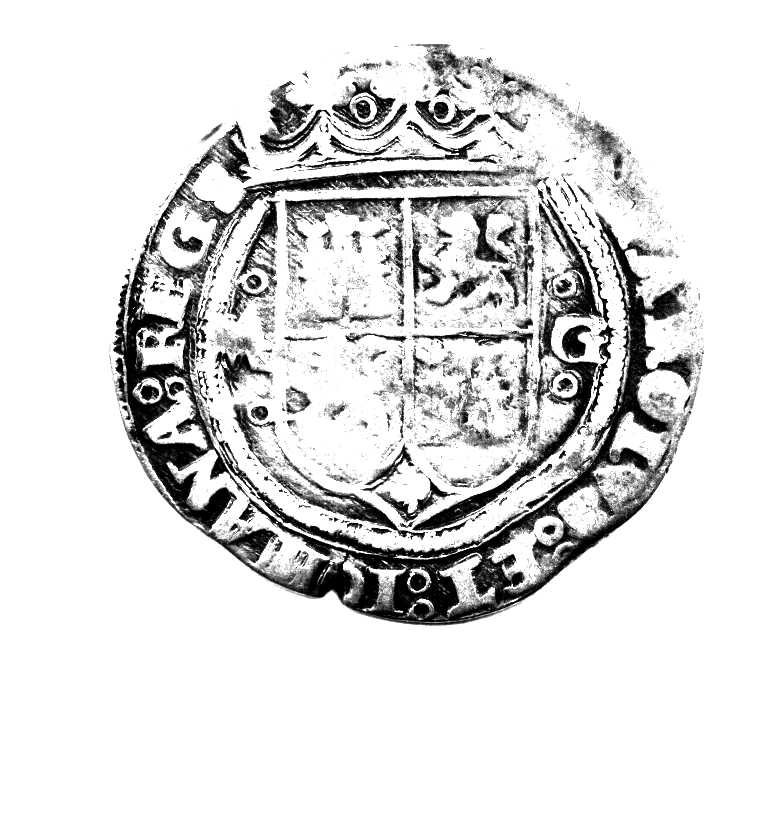
'Carlos y Juana' Mexico City Mint - one real of the 1556 - 1572 period
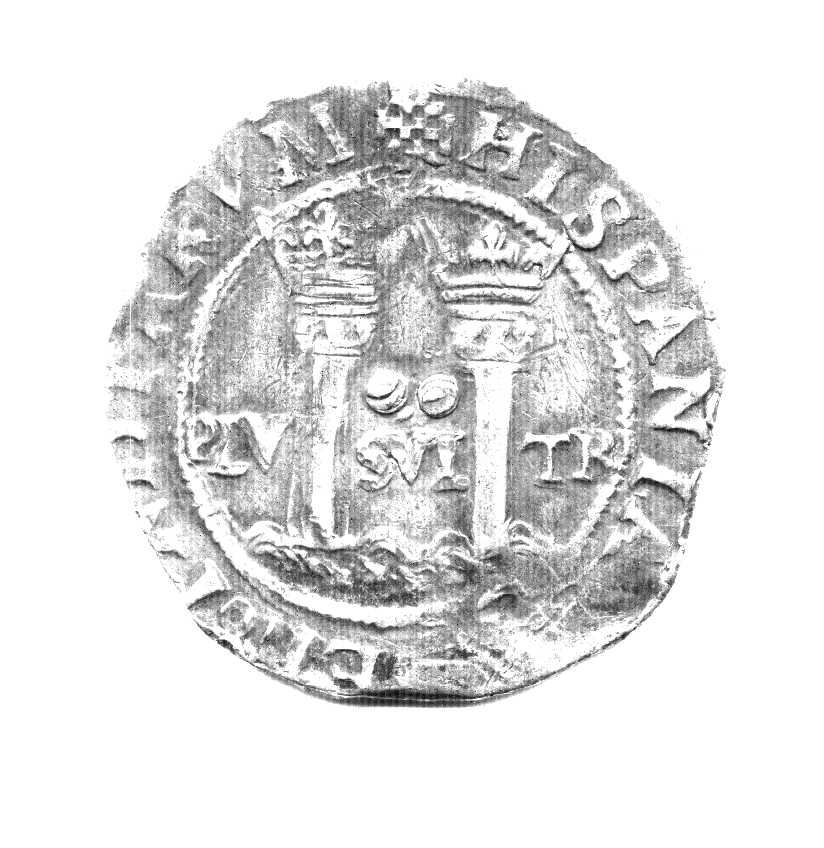 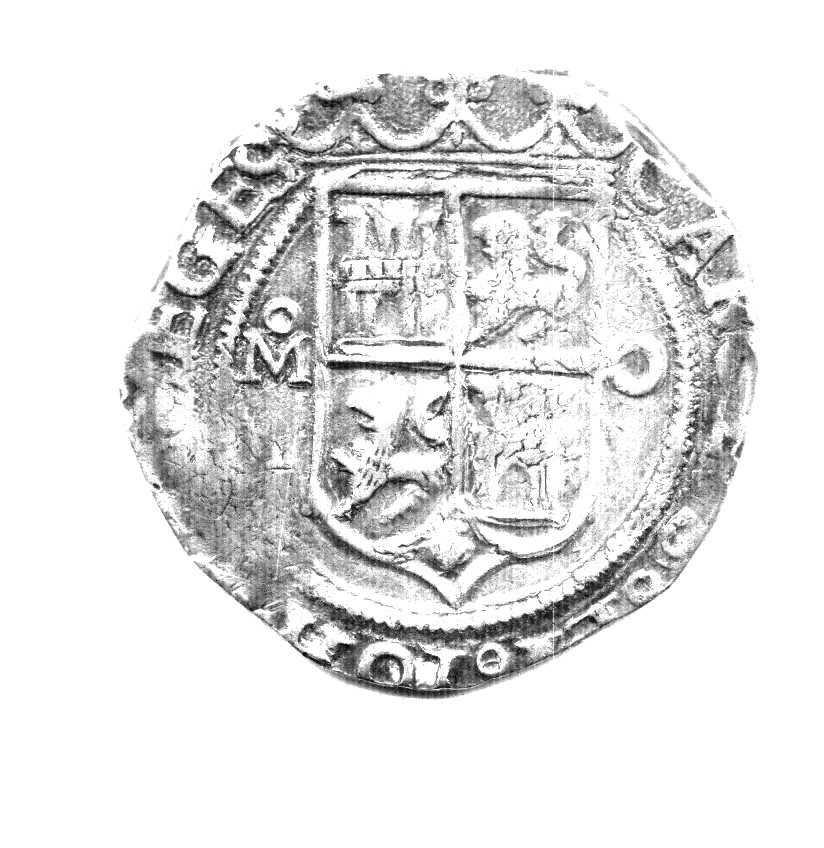
'Carlos y Juana' Mexico City Mint - two reales of the 1542 -1555 period. The 'charges' of the heraldic device on the shield are the lions and castles of the Kingdom of Greater Castille. In the middle ages, 'Spain' actually consisted of several smaller kingdoms. The Kingdom of Leon ('lion') in northwestern Iberia and the Kingdom of Castilla ('castle') in central Iberia joined to form Greater Castilla. The Kingdom of Aragon in eastern Iberia absorbed the Kingdom of Catalua and the County of Valencia. In 1469 Isabella of Castilla married Ferdinand of Aragon, and together they conquered Granada, the last Moorish kingdom in Iberia, in 1492 (this is symbolized by the pomegranate at the bottom of the shield - 'granada' is the Spanish word for pomegranate). However, when 'Spaniards' colonized the new world, it was in the name of Castille instead of all of 'Spain', and that is reflected in the arms on all of the Spanish colonial coins. The 'Pillars of Hercules' was a poetic name for the Straits of Gibraltar. Conventional wisdom among medieval geographers was that 'beyond the Pillars of Hercules - ne plus ultra', - nothing beyond (except empty ocean). When Columbus proved them wrong, the Spanish proclaimed it on their coins with this design. However, the Mexico City Mint coins of Carlos y Juana were not the first to use the design. The first European coinage minted for the Americas were the copper 4 maravedis (~1/8 real) pieces struck at Burgos in Castille, initially for Santo Domingo (the island of Hispaniola in the Caribbean, now Haiti and the Dominican Republic), but later also for circulation in Mexico and Panama. The first ones were struck 1502-04 in the name of Ferdinand and Isabella, having an F-I monogram on the other side from the pillars. When Isabella died in 1504, her daughter Johanna (Juana in Spanish) succeeded her as Queen of Castille. When Johanna's Prince Consort, Philip 'the Handsome' of Hapsburg died in a cholera epidemic in 1506, Johanna went mad with grief, and her father, Ferdinand of Aragon became regent of Castille.
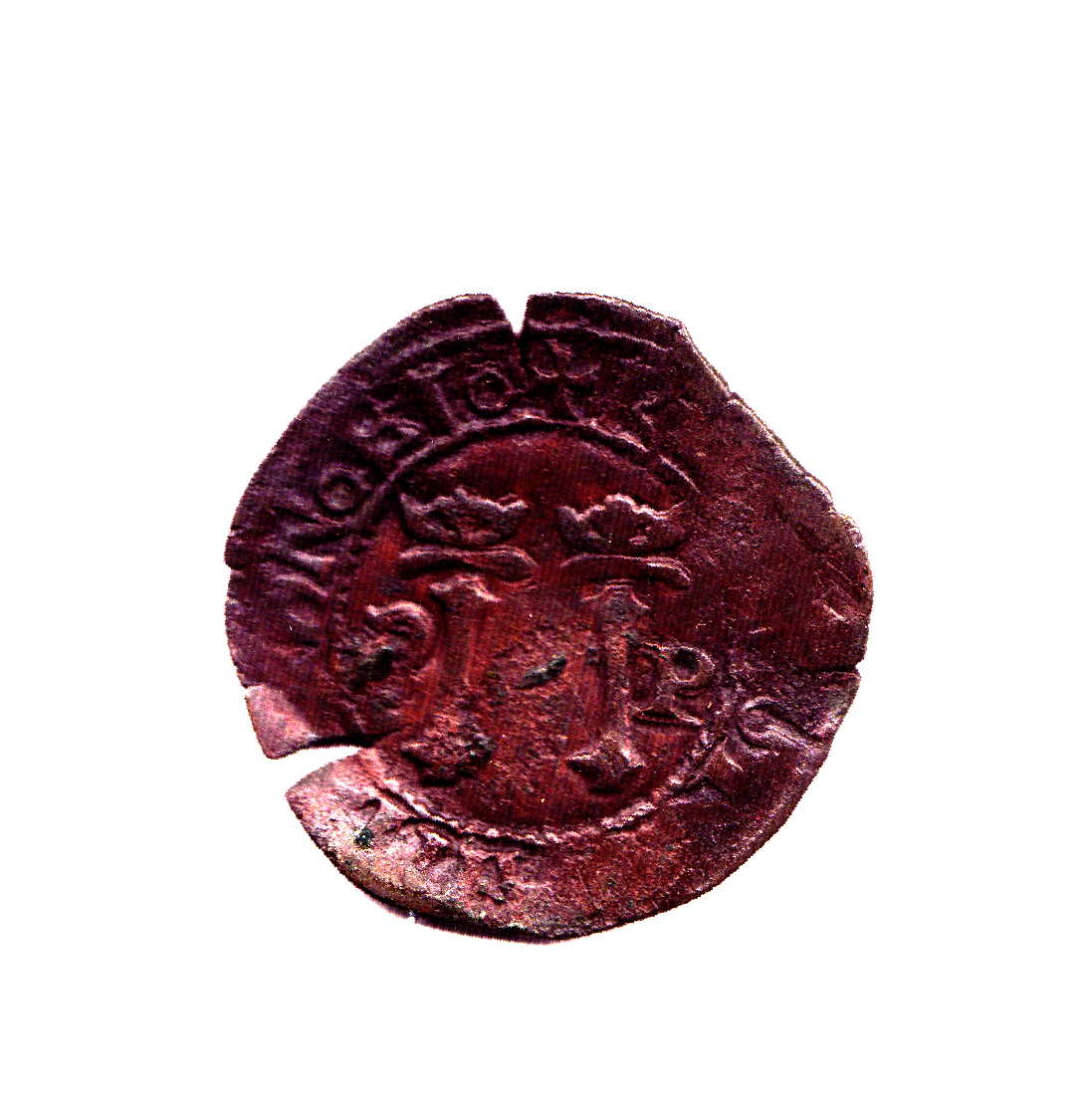 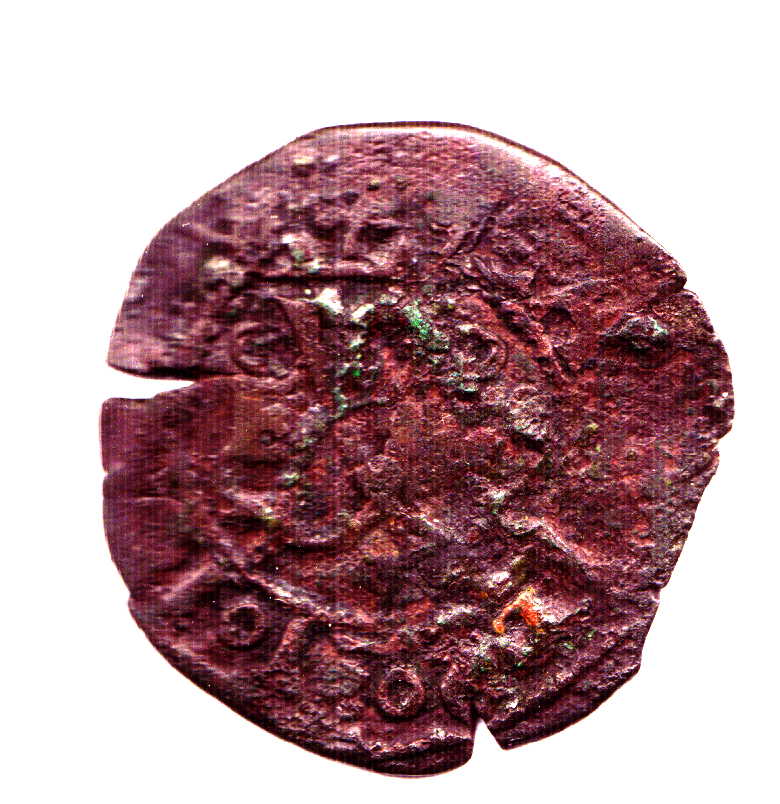
copper 4 maravedis of Santo Domingo (Burgos Mint) When Ferdinand died in 1516, Johanna's son Carlos became King Carlos I of Aragon and Regent of Castille, so the last pillars coppers struck in the early 1520's had the C-J monogram of Carlos yJuana. (In 1521, Carlos was elected Holy Roman Emperor, so he's also known as Emperor Karl V, and the Golden Fleece was a symbol of that office.) As ruler of Aragon, he also ruled Aragonese territories in Italy, where the Pillars of Hercules design was also used on at least one coin type. 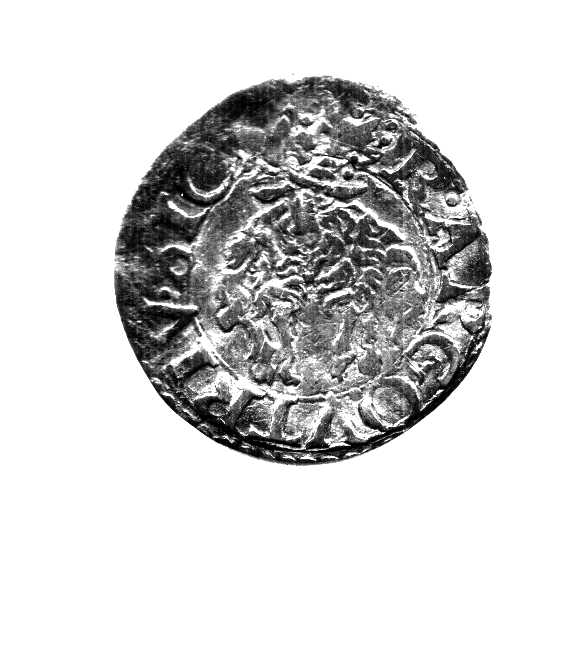 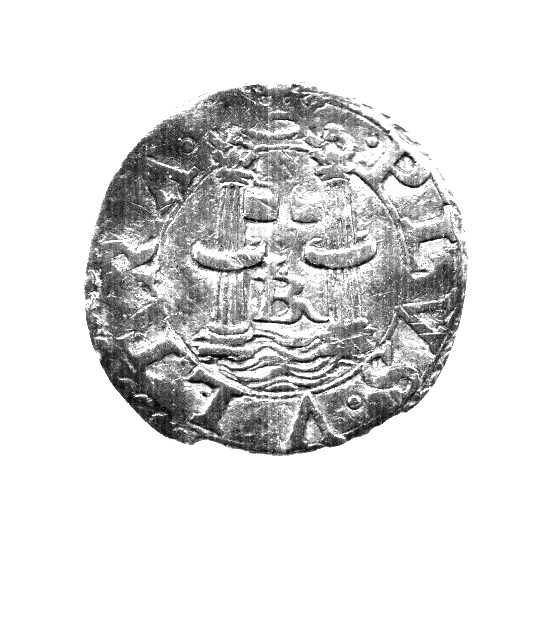
Silver cinquina of Sicily Naples - Of Carlos I/Karl V, 1521-56 Karl V The first minting in the Western Hemisphere could be said to have taken place in Mexico City in the early 1520's, when 'Tepuzque' gold was produced. These were gold discs stamped with their weight and fineness and sometimes royal countermarks. However, no specimens survive, and it is highly debatable whether they should be considered true 'coins'. The Mexico City Mint began regular coinage of silver in 1536 - 116 years before the first New England coins, and 256 years before the Philadelphia Mint was founded. This four reales piece may look pretty crude, but in fact it is much better struck than the macuquina or 'cob' coinage produced at Mexico City from 1572 to 1732. It is also important to keep in mind that the very first coins ever struck on a screw press (gold ducats minted for the Pope by Benevuto Cellini) were only struck in 1530, and very few coins were machine struck before the 1550's - and none were machine struck in the Western Hemisphere until the Portuguese brought coining presses to Brazil in 1695. Got an article you'd like to submit? Send it to info@oregoncoinclubs.org. |